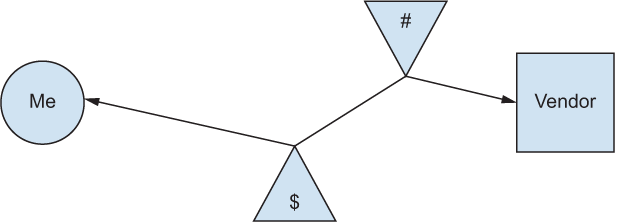Problems are the spice of life at work! They’re the situations that take us out of the day-to-day grind and give us a challenge to work on. If you’re not a confident problem-solver, of course, problems can be stressful and feel like opportunities for failure. But with the right methodology, you can turn problem-solving into a repeatable, reliable process that makes you a winner.
11.1 Problem-solving vs. troubleshooting
I want to emphasize that this chapter is about problem-solving, not troubleshooting. I do realize those terms seem to be awfully alike, though, so I want to take a moment to differentiate:
Troubleshooting, in my mind, is a technical activity. It happens when something is not working properly and you are seeking to restore proper operation. Troubleshooting has a fixed and definite outcome: restoring whatever is broken to its proper functionality.
Problem-solving, for me, is not necessarily a technical activity. It can happen between people and between businesses, and it doesn’t necessarily indicate that something is broken—merely that something isn’t working the way you or the other party most want it to. The outcome of problem-solving is often subjective; there isn’t always a fixed solution to aim for, but a spectrum of possible solutions, each with various trade-offs.
11.2 Clearly state the problem
To illustrate how I think about problem solving, I’ll use a running example in this chapter, along with some simple diagrams. Let’s say I have a vendor, whom I’ve contracted to create a particular deliverable for my company. Maybe that deliverable is an application of some kind, a document, or an analysis of some sort. Doesn’t matter; it’s a deliverable. We’ve agreed to a price and to a delivery date. In other words, we’ve got full alignment between what I want and what the vendor is delivering. Let’s express that agreement in a diagram. In figure 11.1, I’m the circle, the vendor is the square, and we have direct alignment between us.

Figure 11.1 Direct alignment = no problem
Now let’s throw a problem into the mix. In figure 11.2, something has changed. Let’s suppose that some internal business pressures led me to need the vendor’s deliverable earlier. Now the vendor and I are no longer aligned: the vendor was prepared to do what they had contracted to do, and I’m changing the rules of the game all of a sudden.

Figure 11.2 Misalignment = problem
As the person who needs to solve this problem, I’m wondering how to move the arrow back into alignment. If you want, think of this figure as a billiards illustration, with the arrow representing the path of the cue ball. What else can I add to the diagram so that I can bank the cue ball off something and get it into the right pocket: the vendor?
11.3 Identify your levers
I start by making a list of levers—things about the situation I can change. Not all the levers have to be helpful; at this point, I’m just trying to figure out what I can influence in the situation. In this scenario I might consider levers such as these:
-
Money—Perhaps the vendor could be motivated by additional money on the table, although my finance department might not be able to give me more money.
-
Relationship—Presuming that the vendor is motivated by having work to do, they might find value in having a better relationship with my business—a relationship that could result in more work over the long term. So if I can guarantee more work, the vendor may be able to deliver on the new timeline.
-
Deliverable—Can I change the nature of the deliverable so that I’m asking the vendor to do less, thereby making my new timeframe easier to achieve? Could I remove some application features, reduce the length of a document, or make some other substantive change?
-
Alternatives—Could I switch vendors? This lever can be a complex one, depending on the contract, the business relationship, and other factors, but it’s something I can consider.
Suppose that I go to the vendor and say, “Hey, I can throw in 10% more money if you can get this done faster.” But that lever, shown in figure 11.3, might not be enough. The vendor might come back and say, “Well, I can get you more, but I still can’t get you the whole thing.” So I’m still not fully aligned.

Figure 11.3 Using levers to realign
That lever helped, but it didn’t solve the problem. Okay, let’s try another lever. I’ll reduce the deliverable as well and try to pull the line up—only a little, perhaps, but enough to get us to an agreement. Figure 11.4 shows the final solution.

Figure 11.4 Using multiple levers to create full alignment
This example is the essence of problem-solving: clearly state the problem and then clearly identify the levers that you might be able to use to influence the situation. Pull the right levers to re-create alignment and remove the problem.
When you approach problem-solving this way, the tough part is knowing what levers you have for any given situation. That’s where experience comes in, and a deliberate effort on your part to learn can play a big role. Knowing which levers apply to a particular situation is something a mentor or manager can and should be able to help you with. Also, you can perform independent research—within your organization, by talking to your co-workers, and by researching your field in general—to broaden your understanding of the situation and the levers you can pull.
11.4 Negotiating solutions
Negotiating is a major aspect of problem-solving. I find that people sometimes miss two major components of negotiating, so I want to call them out:
-
In any healthy negotiation, both sides usually gain something and lose something. I might pay a vendor more to deliver something faster, but the vendor is going to have to work harder to make it happen. That’s why some of the best negotiations end in a situation in which nobody may win, but nobody loses.
-
See negotiating as a way to try to achieve the best possible balance between opposing interests. Negotiating isn’t about winning and losing, and you should try not to see it as a competition. Negotiating should be about working together toward an outcome that meets everyone’s needs in the best way possible while acknowledging that neither side will get everything exactly the way they want.
Negotiating, then, is all about understanding which levers you have to pull and how much you lose and gain by pulling each one. Here are some short examples that illustrate good and bad negotiating techniques:
-
You’re negotiating a base salary at a new job. The employer offers $150,000, and you ask for $10,000 more, but you offer nothing in return.
This example is a poor negotiation: you’re trying to pull on a lever for money, but you have nothing on your side of that lever.
-
You’re negotiating a base salary at a new job. The employer offers $150,000, and you ask for $10,000 more; then you point out that the median base pay in your region is $8,000 higher than the employer offered and that the number of applicants in the job market is extremely low, but the number of open positions is quite high. An extra $10,000 puts the employer a bit over median, but it’s an acknowledgement that the market is slightly against the employer right now.
This example is a good negotiation: you’ve brought data to the table, and you’ve put something on your side of the lever: the condition of the market and its ability to provide qualified candidates for all the open jobs.
-
Your boss asks you to pitch in on a particular project to help get it done by the end of the week. You offer to drop some of your other duties to help out but are told that all those tasks have to be done as well. You object, pointing out that you have little enough free time as it is, and your boss counters by noting that you’re well paid and that few other companies would hire you at that rate right now.
I think the boss’s attitude is pretty toxic, but at least the negotiation is valid: the levers of time and employment are seeking to create a balance. Mind you, threatening a staff member’s employment is not a lever that any boss should pull lightly, because it’s going to encourage the employee to pull back by seeking a new job. There’s a lesson here: just because a particular lever may be valid doesn’t mean it’s wise to pull it.
-
You’re having difficulty with a vendor that delivers great work but almost always misses their original agreed-upon deadline. You want to keep working with them, so you offer them a series of contracts. Your caveat is that they have to hit every deadline to guarantee that long stream of work; if they miss one, all the future contracts are void, and you’re free to find a new vendor.
This example is a good negotiation: you’re pulling a lever (offering a long-term stream of work) in exchange for something you want.
As you move any lever, it moves away from you and toward something else or toward you and away from something else. In perfect business relationships, all the levers in a situation are carefully balanced to create the best set of trade-offs.
11.5 Action items
For this chapter, I’d like you to consider a few experiences in your own life and workplace that involve problem-solving. There are no right or wrong answers; the exercise is more about thinking through the situation and becoming more automatic about problem-solving science:
-
Suppose that you’re not happy with the price that your internet provider charges for service at home. What levers do you have that would apply to this situation?
-
Think about a few problems you’ve experienced or observed at work in recent months—internal problems, or team- or company-level problems that may not have affected you personally or directly. Where was the misalignment that created the problem? Which levers were applicable to each situation? In the end, which levers were pulled, and to what effect?
-
What kinds of unhealthy negotiations have you witnessed recently, at work or in your personal life? Unhealthy negotiations are those that involve only give or take rather than the give and take of healthier negotiations.
